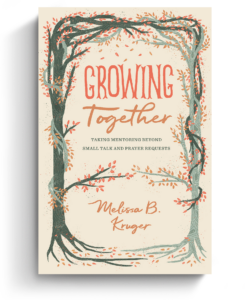Question: If biological evolution is true and there was no historical Adam and Eve, how can we know where sin and suffering came from?
Answer: Belief in evolution can be compatible with a belief in a historical fall and a literal Adam and Eve. There are many unanswered questions around this issue.
Compared to other questions laypeople ask pastors about creation and evolution, I find the concerns of this question much more well-grounded. Indeed, I must disclose, I share them. Many orthodox Christians who believe God used evolutionary biological processes to bring about human life not only do not take Genesis 1 as history, but also deny that Genesis 2 is an account of real events. Adam and Eve, in their view, were not historical figures but an allegory or symbol of the human race. Genesis 2, then, is a symbolic story or myth that conveys the truth that human beings all have and do turn away from God and are sinners.
Before I share my concerns with this view, let me make a clarification. One of my favorite Christian writers (that’s putting it mildly), C. S.Lewis, did not believe in a literal Adam and Eve, and I do not think the lack of such belief means he cannot be saved. But my concern is for the church corporately and for its growth and vitality over time. Will the loss of a belief in the historical fall weaken some of our historical, doctrinal commitments at certain crucial points? Here are two points where that could happen.
The Trustworthiness of Scripture
The first basic concern has to do with reading the Bible as a trustworthy document. Traditionally, Protestants have understood that the writers of the Bible were inspired by God and that, therefore, discerning the human author’s intended meaning is the way that we discern what God is saying to us in a particular text.[1]
What, then, were the authors of Genesis 2-3 and of Romans 5, who both speak of Adam, intending to convey? Genesis 2-3 does not show any of signs of “exalted prose narrative” or poetry. It reads as the account of real events; it looks like history. This doesn’t mean that Genesis (or any text of the Bible) is history in the modern, positivistic sense.
Ancient writers who were telling about historical events felt free to dischronologize and compress time frames—to omit enormous amounts of information that modern historians would consider essential to give “the complete picture.” However, ancient writers of history still believed that the events they were describing actually happened. Ancient writers also could use much figurative and symbolic language. For example, Bruce Waltke points out that when the psalmist says, “You knit me together in my mother’s womb” (Ps 139:13), he was not saying that he hadn’t developed in the perfectly normal biological ways. It is a figurative way to say that God instituted and guided the biological process of human formation in his mother’s womb. So when we are told that God “formed Adam from the dust of the ground” (Gen 2:7), the author might be speaking figuratively in the same way, meaning that God brought man into being through normal biological processes.[2] Hebrew narrative is incredibly spare—it is only interested in telling us what we need to know to learn the teaching the author wants to convey.
Despite the compression, omissions, and figurative language, are there signs in the text that this is a myth and not an historical account? Some say that we must read Genesis 2-11 in light of other ancient creation myths of the Near Eastern world. Since other cultures were writing myths about events like the creation of the world and the great flood, this view goes, we should recognize that the author of Genesis 2-3 was probably doing the same thing. In this view, the author of Genesis 2-3 was simply recounting a Hebrew version of the myth of creation and flood. He may even have believed that the events did happen, but in that he was merely being a man of his time.
Kenneth Kitchen, however, protests that this is not how things worked. The prominent Egyptologist and evangelical Christian, when responding to the charge that the flood narrative (Gen 9) should be read as “myth” or “proto-history” like the other flood-narratives from other cultures, answered:
The ancient Near East did not historicize myth (i.e. read it as imaginary “history”). In fact, exactly the reverse is true—there was, rather, a trend to “mythologize” history, to celebrate actual historical events and people in mythological terms. [3]
In other words, the evidence is that Near Eastern “myths” did not evolve over time into historical accounts, but rather historical events tended to evolve over time into more mythological stories. Kitchen’s argument is that, if you read Genesis 2-11 in light of how ancient Near Eastern literature worked, you would conclude, if anything, that Genesis 2-11 were “high” accounts, with much compression and figurative language, of events that actually happened. In summary, it looks like a responsible way of reading the text is to interpret Genesis 2-3 as the account of an historical event that really happened.
Consider the New Testament
The other relevant text here is Romans 5:12ff, where Paul speaks of Adam and the fall. It is even clearer that Paul believed that Adam was a real figure. N. T. Wright, in his commentary on Romans says:
Paul clearly believed that there had been a single first pair, whose male, Adam, had been given a commandment and had broken it. Paul was, we may be sure, aware of what we would call mythical or metaphorical dimensions to the story, but he would not have regarded these as throwing doubt on the existence, and primal sin, of the first historical pair.[4]
If you don’t believe Adam and Even were literal but realize the author of Genesis was probably trying to teach us that they were real people who sinned—Paul certainly was—then you have to face the implications for how you read Scripture. You may say, “Well, the biblical authors were ‘men of their time’ and were wrong about something they were trying to teach readers.” The obvious question is, “How will we know which parts of the Bible to trust and which not?”
The key for interpretation is the Bible itself. I don’t think the author of Genesis 1 wants us to take the “days” literally, but it is clear that Paul definitely does want readers to take Adam and Eve literally. When you refuse to take a biblical author literally when he clearly wants you to do so, you have moved away from the traditional understanding of biblical authority.
Sin and Salvation
Some may respond, “Even though we don’t think there was a literal Adam, we can accept the teaching of Genesis 2 and Romans 5, namely that all human beings have sinned and that through Christ we can be saved. So the basic biblical teaching is intact, even if we do not accept the historicity of the story of Adam and Eve.” I think that assertion is too simplistic.
The Christian gospel is not good advice, but good news. It is not directions on what we should do to save ourselves but rather an announcement of what has been done to save us. The gospel is that Jesus has done something in history so that, when we are united to him by faith, we get the benefits of his accomplishment, and so we are saved. As a pastor, I often get asked how we can get credit for something that Christ did. The answer does not make much sense to modern people, but it makes perfect sense to ancient people. It is the idea of being in “federation” with someone, in a legal and historical solidarity with a father, or an ancestor, or another family member or a member of your tribe. You are held responsible (or you get credit) for what that other person does. Another way to put it is that you are in a covenant relationship with the person. An example is Achan, whose entire family is punished when he sins (Josh 7.) The ancient and biblical understanding is that a person is not “what he is” simply through his personal choices. He becomes “what he is” through his communal and family environment. So if he does a terrible crime—or does a great and noble deed—others who are in federation (or in solidarity, or in covenant with him) are treated as if they had done what he had done.
This is how the gospel salvation of Christ works, according to Paul. When we believe in Jesus, we are “in Christ” (one of Paul’s favorite expressions, and a deeply biblical one.) We are in covenant with him, not because we are related biologically but through faith. So what he has done in history comes to us.
What has all this to do with Adam? A lot. Paul makes the same point in 1 Corinthians 15 about Adam and Christ that he does in Romans 5.
For since death came through a man, the resurrection of the dead comes also through a man. For as in Adam all die, so in Christ all will be made alive (1 Cor 15:21-22).
When Paul says we are saved “in Christ” he means that Christians have a covenantal, federal relationship with Christ. What he did in history is laid to our account. But in the same sentence Paul says that all human beings are similarly (he adds the word “as” for emphasis) “in Adam.” In other words, Adam was a covenantal representative for the whole human race. We are in a covenant relationship with him, so what he did in history is laid to our account.
When Paul speaks of being “in” someone he means to be covenantally linked to them so their historical actions are credited to you. It is impossible to be “in” someone who doesn’t historically exist. If Adam doesn’t exist, Paul’s whole argument—that both sin and grace work “covenantally”—falls apart. You can’t say that Paul was a man of his time but accept his basic teaching about Adam. If you don’t believe what he believes about Adam, you are denying the core of Paul’s teaching.
[1] Granted, often New Testament writers see Messianic meanings in Old Testament prophecies that were doubtless invisible to the OT prophets themselves. Nonetheless, while a biblical author’s writing may have more true meanings than he intended when writing, it may not have less. That is, what the human author meant to teach us cannot be seen as mistaken or now obsolete without surrendering the traditional understanding of Biblical authority and trustworthiness.
[2] See Bruce Waltke, Genesis: A Commentary (Zondervan, 2001) p. 75. Of course, Waltke notes that Psalm 139 is poetry and Genesis 2 is narrative, but that does not mean that prose cannot use figurative speech and poetry literal speech. It only means that poetry uses more figurative and prose less. Another example of a narrative that speaks of the divine power behind a natural process is Acts 12:23. There we are told that Herod Agrippa was delivering a public address to an audience when “an angel of the Lord struck him down, and he was eaten by worms, and died.” Josephus relates that Agrippa did indeed fall ill at the same time, but it was due to a “severe intestinal obstruction.” Here again we see the Bible speaking of God’s action behind a natural biological process.
[3] K. A. Kitchen, On the Reliability of the Old Testament (Eerdmans, 2003) p.425.
[4] N.T. Wright, “Romans” in The New Interpreter’s Bible vol.X, p. 526.
Involved in Women’s Ministry? Add This to Your Discipleship Tool Kit.
 We need one another. Yet we don’t always know how to develop deep relationships to help us grow in the Christian life. Younger believers benefit from the guidance and wisdom of more mature saints as their faith deepens. But too often, potential mentors lack clarity and training on how to engage in discipling those they can influence.
We need one another. Yet we don’t always know how to develop deep relationships to help us grow in the Christian life. Younger believers benefit from the guidance and wisdom of more mature saints as their faith deepens. But too often, potential mentors lack clarity and training on how to engage in discipling those they can influence.
Whether you’re longing to find a spiritual mentor or hoping to serve as a guide for someone else, we have a FREE resource to encourage and equip you. In Growing Together: Taking Mentoring Beyond Small Talk and Prayer Requests, Melissa Kruger, TGC’s vice president of discipleship programming, offers encouraging lessons to guide conversations that promote spiritual growth in both the mentee and mentor.

































